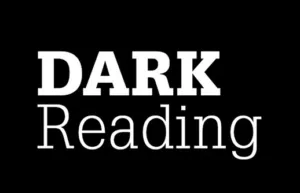Protecting Your Business: Strategies to Combat DNS Attacks
Domain squatting, spoofing, and masquerading are sophisticated techniques that cybercriminals employ to compromise systems, steal sensitive information, and conduct fraudulent activities. Collectively, these are all DNS attacks. Understanding these methods and implementing robust defense mechanisms are crucial for IT and cybersecurity leaders to protect their organizations from potential threats.
Domain Squatting (Cybersquatting)
Domain squatting, or cybersquatting, involves registering, selling, or using a domain name with malicious intent to profit from the goodwill of a trademark belonging to someone else. Cybercriminals often register domain names that are typographical errors of well-known brands (typosquatting) or use similar-looking characters (IDN homograph attacks) to deceive users. These domains can be used for phishing attacks, to spread malware, or to steal personal information.
Spoofing
Spoofing attacks involve impersonating another device or user on a network to steal data, spread malware, or bypass access controls. This can include email spoofing, where attackers forge sender addresses to trick recipients into believing the message is from a legitimate source, or IP spoofing, where attackers disguise their IP address to impersonate another computing system.
Masquerading
Masquerading involves an attacker pretending to be an authorized user of a system to gain unauthorized access. This can be achieved through stolen credentials or exploiting weaknesses in authentication mechanisms. Unlike spoofing, which focuses on impersonating devices or users to intercept or inject data, masquerading is about gaining access to restricted areas of a network or system under a false identity.
Defense Strategies
- Implement Advanced DNS Security: Utilize DNS security solutions that offer protection against malicious domain registrations, detect anomalies, and block access to known malicious sites.
- Regularly Monitor Domain Registrations: Keep an eye on domain registrations that closely resemble your organization’s domain names to catch cybersquatting attempts early.
- Educate Employees: Conduct regular training sessions to educate employees about the risks of phishing and spoofing attacks. Teach them how to recognize suspicious emails and URLs.
- Use Multi-Factor Authentication (MFA): Implement MFA to add an extra layer of security, making it more difficult for attackers to gain unauthorized access through masquerading.
- Employ Email Authentication Protocols: Implement protocols such as SPF (Sender Policy Framework), DKIM (DomainKeys Identified Mail), and DMARC (Domain-based Message Authentication, Reporting, and Conformance) to help detect and prevent email spoofing.
- Regularly Update and Patch Systems: Keep all systems and software up to date with the latest security patches to protect against vulnerabilities that could be exploited in spoofing or masquerading attacks.
- Network Segmentation: Segment your network to limit the movement of attackers within your systems should they gain access through masquerading or other means.
By understanding these threats and implementing a comprehensive defense strategy, IT and cybersecurity leaders can significantly reduce their organization’s risk of falling victim to domain squatting, spoofing, and masquerading attacks.
Supporting Documents
For further reading and more detailed strategies on defending against these cyber threats, please refer to the following resources:
- CrowdStrike on Cybersquatting
- DNS Security Vulnerabilities: Domain Masquerading, Squatting, Stuffing, and Other DNS
Paul Bergman runs a business strategy and cybersecurity consulting company in San Diego. He writes on cybersecurity and board management for both corporate and nonprofit boards.
- The Imperative for Cyber Talent on Corporate Boards - March 29, 2024
- Talking CMMC preparation - March 12, 2024
- Protecting Your Business: Strategies to Combat DNS Attacks - February 20, 2024
